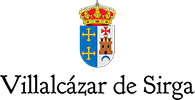HISTORY OF VILLASIRGA
Telluric forces, magnetic fields, Templars, miracles and pilgrims
Telluric forces, magnetic fields, Templars, miracles and pilgrims. All of these words are closely linked to Villalcázar de Sirga, a town in the Tierra de Campos region that has been remarkably transformed throughout its history, to such an extent that its original name has been changed.
Its original name, Villasirga, appears for the first time in an 11th century document and with more insistence in the Cantigas of King Alfonso X the Wise, dated in the 13th century. This medieval religious songbook includes 427 compositions written in Galician-Portuguese in which the Virgin Mary is praised and her miracles are told. Twelve of these poems are dedicated to the Virgin of Santa María la Blanca, from Villasirga, which together with the devotion that King Sancho IV felt for this Virgin, to whom he went on pilgrimage several times, made this small Castilian town to become more important.
King Alfonso X the Wise included in his famous medieval cantigas twelve poems about the Virgin of Santa María la Blanca, from Villalcázar de Sirga. In them, some of the miracles performed by this image that is still kept today in the temple of the same name are told.
It was the Order of the Temple that ordered the construction of this church on which all the activity of this town revolves and in the 14th century, specifically in 1307, it appears as the only Templar commission in Castilian lands. There are those who claim that the construction in this enclave, which was hardly anything special since until that time it was simply an agricultural and livestock village, was not random. There are studies that speak of electromagnetic fields, telluric forces and water currents that support this theory.
What we do know for sure is that the disappearance of the Order of the Temple in 1312 meant that this town passed from hand to hand between religious orders and lordships during the 14th and 15th centuries. It was during this period that Villasirga gained importance. It was the miracles of the Virgin of Santa María la Blanca praised in the cantigas, its Templar past and its proximity to the Way of Saint James that contributed to the fame that this town has today.
The Jacobean route that today makes hundreds of pilgrims pass and stop at this point did not always run through Villasirga, but to go from Frómista to Carrión de los Condes, the walkers preferred to pass through Arconada, where there was a hospital. It seems that the reputation achieved by the church of Santa María la Blanca caused this variation in the original route, making Villasirga part of the official route to Santiago de Compostela.
In addition, in 1661 the title of Count of Villalcázar de Sirga was created, at which time the name of the village changed to the present one. The first to hold this title was Juan de Echeverri y Rovere, Captain General of the Navy, who would cede the county to the Bishop of Palencia, turning the church of Santa María into the parish church of Villálcazar.
Today, this town with barely 200 inhabitants is an obligatory stop for anyone taking the Jacobean route. Not only does its heritage deserve a halt on the way, but its gastronomy has crossed borders and hundreds of people stop every year at the foot of the temple to observe it and continue their journey after tasting the rich food offered in its peculiar dining rooms.
